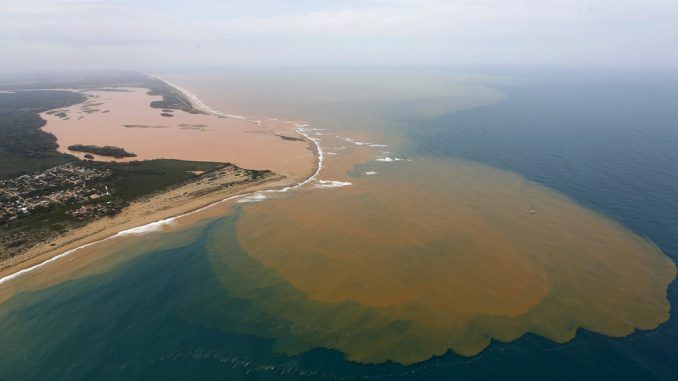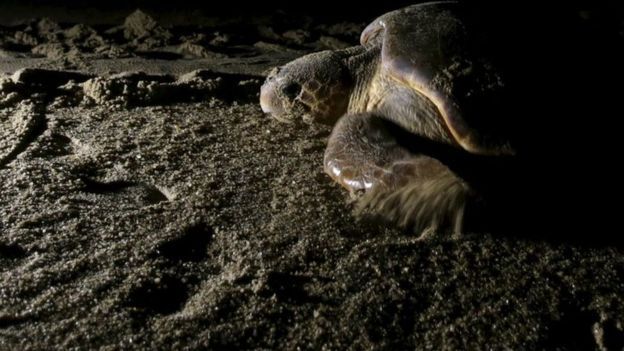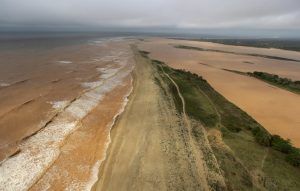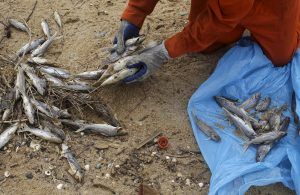
Toxic mud travelling down the Rio Doce river in Brazil from a collapsed dam has reached the Atlantic Ocean, amid concerns it will cause severe pollution.
Since the dam at an iron mine collapsed two weeks ago the toxic waste has travelled more than 500km (310 miles)
The environmental disaster occurred on November 5 when a Samarco iron mine dam collapsed, releasing sixty million cubic meters of toxic waste.

BYPASS THE CENSORS
Sign up to get unfiltered news delivered straight to your inbox.
You can unsubscribe any time. By subscribing you agree to our Terms of Use
Residue from the iron ore mine flooded downstream for a 100 kilometers, creating a river of toxic red mud that engulfed a nearby town.
The contaminated mud, tested by the water management authorities, was found to contain toxic substances like mercury, arsenic, chromium and manganese at levels exceeding human consumption levels.
The area of sea near the mouth of the Rio Doce is a feeding ground and a breeding location for many species of marine life including the threatened leatherback turtle, dolphins and whales

The toxic residue now threatens the turtles as well as other aquatic wildlife. The tide is expected to spread along a 5.5-mile stretch of coastline, threatening the Comboios nature reserve, one of the only regular nesting sites for the endangered leatherback turtle.
RT reports:
The deadly deluge quickly flooded villages and contaminated rivers in south-eastern Brazil, with 11 people killed and 12 others still reported missing.
Over the course of the month, the toxic waste travelled more than 500 kilometers downstream to reach the Atlantic Ocean off the coast of the Brazilian state of Espírito Santo.

According to estimates from biologists, it will take some 30 years to clean up the Rio Doce basin after mercury, arsenic, chromium and manganese at levels exceeding human consumption limits were discovered in the red mud.
The contamination threatens the Comboios nature reserve, which is one of the world’s few regular nesting sites for the endangered leatherback turtle.

Fish, loggerhead turtles, whales and dolphins are also in jeopardy as scientists fear the toxic water may reduce oxygen and alter pH levels in the water.


